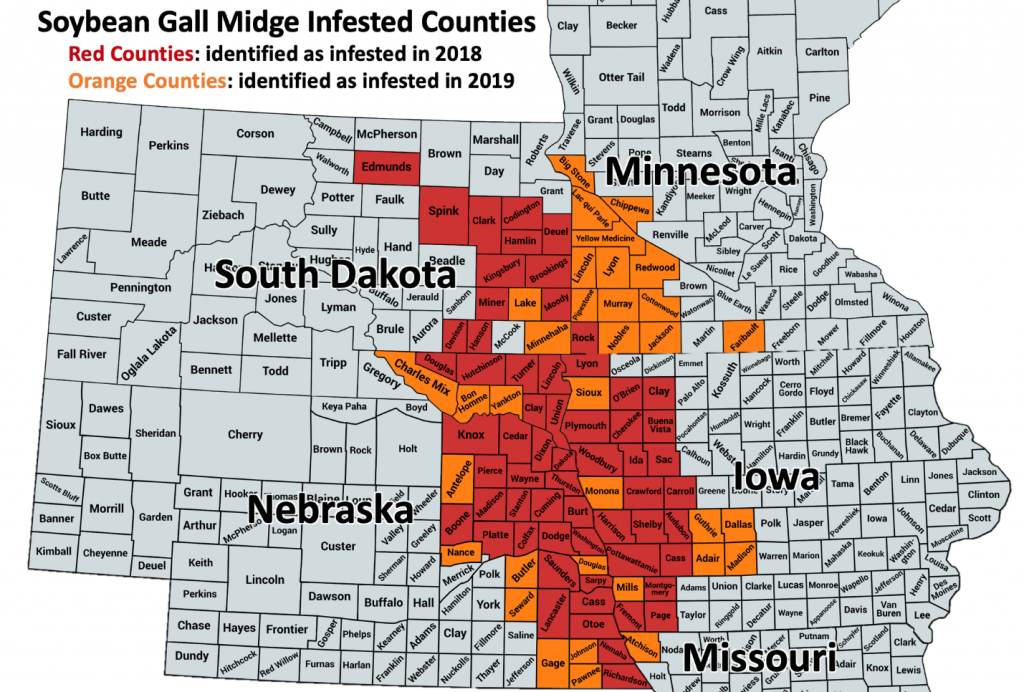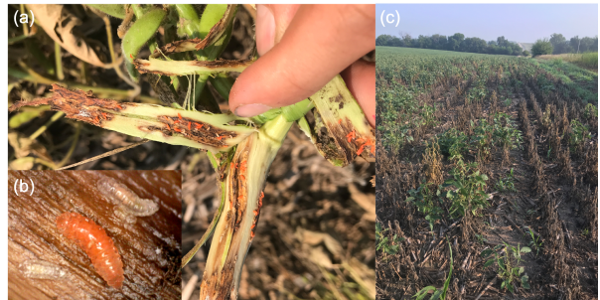Bryan Jensen, UW-Madison Dept. of Entomology and Integrated Pest Management Program
This is a quick reminder to be looking and thinking about soybean gall midge (Resseliella maxima). This insect has not been found in Wisconsin, but it is the time of the growing season when symptoms will start to appear. The enclosed map will show a 5-state area of the Midwest which had detects in 2018 (red counties) and 2019 (orange counties). If the map looks a little different to you, it is. Last year it was thought soybean gall midge (SGM) was present in some isolated Minnesota counties close to our border. However, identification of SGM is now more precise and those specimens are now considered white mold gall midge (WGM), which is not a crop pest.

SGM is an “edge” insect and can infest a range of soybean plants from the very early vegetative stages (V3) to the late reproductive stage. Damage usually starts at the field edge and can, over the course of the growing season, be found further into a field. The majority (if not all) the feeding damage can be found at or near the soil line. A blackened epidermis is often found at the feeding site which may also appear swollen. Often, individual plants will have brittle stems that may break at the soil line. Maggots are very small (approx. ¼ inch) may or may not be present. If present, they can range in color from clear to orange.
Plant symptoms range from asymptomatic during the early stages of infestation to completely dead. Plants killed by SGM may be confused with other soybean diseases. Furthermore, you may think dead plants would easily stand out. Close inspection is necessary. During low incidence, healthy plants can easily obscure dead/damaged plants.

a) Cross sectioned stem at injury site.
b) Early instar (clear) and late instar (orange) SGM,
c) Late season injury indicating intensity of damage
If you find SGM damage I would like to know about it. Contact your local County Extension Educator, or myself (bmjense1@wisc.edu) if you find symptoms.
For now, please be vigilant and look for symptoms.